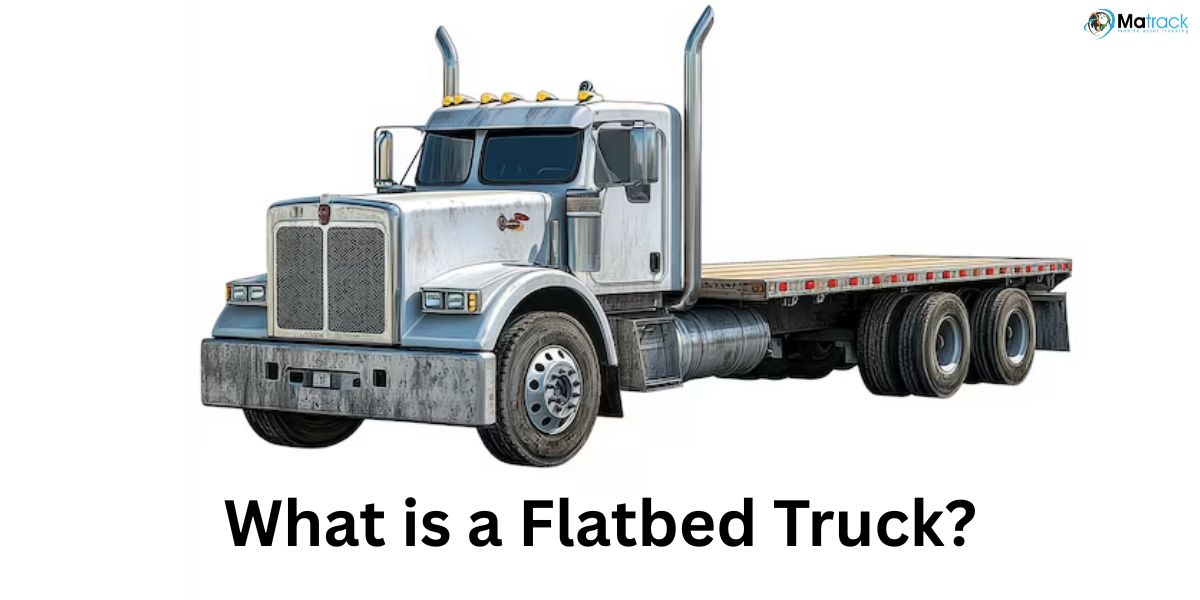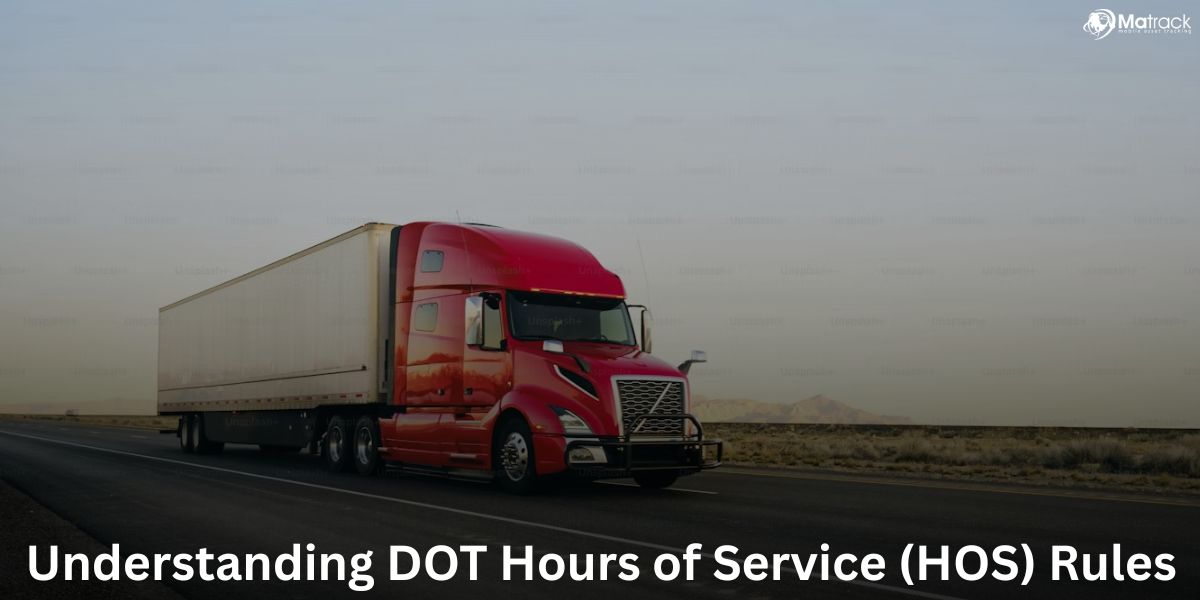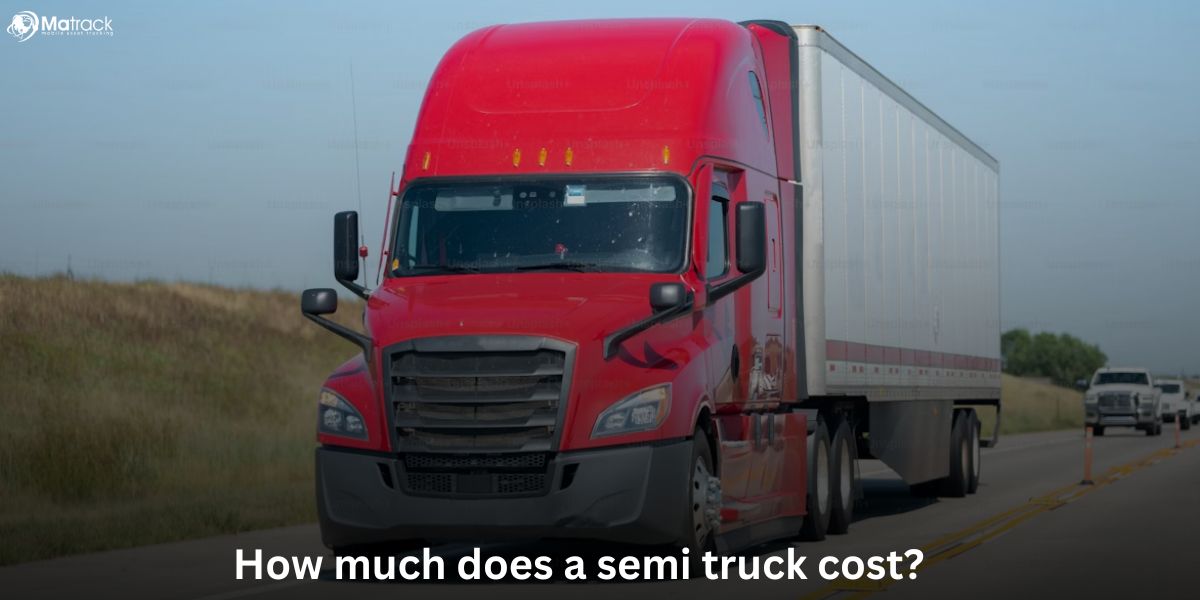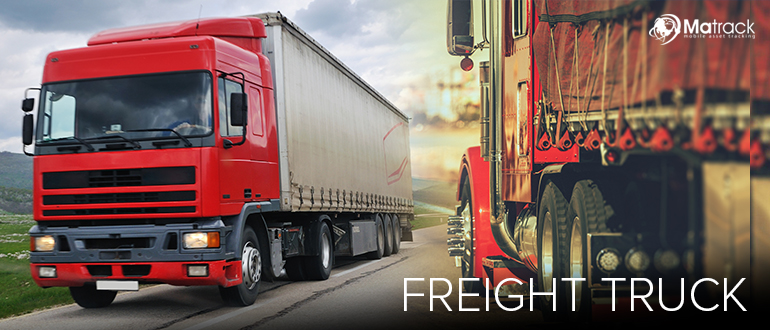Key Takeaways:
- Flatbed truck is an open-deck vehicle used to haul oversized, heavy, or irregular cargo not suitable for enclosed trailers.
- There are six main types of flatbed trucks, each designed with specific deck configurations for different freight sizes and shapes.
- Flatbed trucks are essential in industries like construction, energy, and logistics where fast, flexible loading is required.
- To safely transport cargo, flatbed trucking must follow legal regulations, proper securement steps, and match the trailer to the freight.
What Is Considered a Flatbed Truck?
Flatbed truck is a type of commercial vehicle with a completely flat and open trailer. It doesn’t have any sides or a roof, which makes it easier to load and unload things from any direction, whether that’s from the top, sides, or back.
These trucks carry cargo that is oversized, heavy, or irregularly shaped. Flatbed trucks are used when the cargo cannot fit inside enclosed trailers. The open design increases loading speed and improves access for equipment like cranes or forklifts.
What Are The Types Of Flatbed Trucks?
Standard Flatbed
Standard flatbed truck uses a single, flat main deck from front to rear. There are no raised or lowered sections, which makes it ideal for everyday cargo that doesn’t exceed height limits. It’s simple, reliable, and can be loaded from any side using forklifts or cranes.
- Deck Configuration: Single continuous deck
- Deck Length: 48 to 53 feet
- Deck Width: 8.5 feet
- Deck Height: 60 inches from the ground
- Cargo Height Capacity: Up to 8.5 feet
- Max Freight Weight: 48,000 pounds
- Best Used For: Lumber, steel pipes, packaged freight
Step Deck (Drop Deck)
Step deck, or drop deck, has two levels: an upper front deck and a lower rear main deck. The lower deck sits closer to the ground, allowing the transport of taller cargo without exceeding legal height limits. It’s perfect for freight that stands too tall for a standard flatbed.
- Upper Deck Length: 10 to 11 feet
- Lower Deck Length: 37 to 43 feet
- Deck Width: 8.5 feet
- Upper Deck Height: 58 to 60 inches
- Lower Deck Height: 38 to 42 inches
- Cargo Height Capacity: Up to 10 feet
- Max Freight Weight: 46,000 pounds
- Best Used For: Tall machinery, crates, heavy palletized loads
Double Drop Deck
Double drop deck includes three segments: a short front deck, a low center well, and a raised rear deck. The well, or middle deck, sits very low, allowing the highest cargo clearance of all trailer types. This is the right choice for extra-tall or oddly shaped equipment.
- Front Deck Length: 10 to 12 feet
- Center Well Length: 25 to 29 feet
- Rear Deck Length: 8 to 10 feet
- Deck Width: 8.5 feet
- Center Well Height: 18 to 22 inches
- Cargo Height Capacity: Up to 11.5 feet
- Max Freight Weight: 45,000 pounds
- Best Used For: Transformers, generators, tall construction equipment
Removable Gooseneck (RGN)
RGN trailer lets you detach the gooseneck front to create a loading ramp. It typically includes a deep center well and a short rear deck. The detachable feature makes it ideal for loading heavy equipment that can’t be lifted, like bulldozers or tractors.
- Gooseneck Front Length: 8 to 10 feet
- Center Well Length: 25 to 29 feet
- Rear Deck Length: 8 to 10 feet
- Deck Width: 8.5 feet
- Center Well Height: 18 inches
- Cargo Height Capacity: Up to 11.5 feet
- Max Freight Weight: 42,000 to 80,000 pounds (depending on axles)
- Best Used For: Drive-on equipment, construction and mining machines
Extendable Flatbed
Extendable flatbed, or stretch trailer, has a sliding deck that can extend in length. This is useful when transporting extremely long freight that would otherwise hang off the edge of a standard trailer. It has a single level and behaves like a standard flatbed, just longer.
- Collapsed Deck Length: 48 feet
- Extended Deck Length: Up to 80 feet
- Deck Width: 8.5 feet
- Deck Height: 60 inches
- Cargo Height Capacity: Up to 8.5 feet
- Max Freight Weight: 43,000 pounds
- Best Used For: Beams, windmill blades, construction trusses
Sidekit Flatbed
Sidekit flatbed uses a base flatbed trailer but adds removable side panels and a tarp system. It’s designed for carrying loose bulk goods that need protection but don’t require full enclosure. The frame and tarp shield cargo from wind and rain during transit.
- Deck Configuration: Single deck with side posts and tarp
- Deck Length: 48 to 53 feet
- Deck Width: 8.5 feet
- Deck Height: 60 inches
- Cargo Height Capacity: 8.5 feet under tarp
- Max Freight Weight: 45,000 pounds
- Best Used For: Agricultural goods, gravel bags, scrap material
What Can Flatbed Trucks Transport?
Flatbed trucks transport a wide range of cargo that does not fit inside enclosed trailers. Typical flatbed loads include:
- Construction materials: Lumber, rebar, drywall, bricks
- Heavy machinery: Excavators, bulldozers, tractors
- Steel products: Coils, pipes, I-beams
- Vehicles: Military vehicles, buses, aircraft parts
- Agricultural products: Hay bales, farm equipment
- Prefabricated structures: Modular homes, scaffolding
Because flatbed trucks offer open access, they reduce the need for packaging and simplify delivery for non-standard freight.
Industries That Use Flatbed Trucks
Flatbed trucks serve at least 5 major industries:
- Construction: Delivers raw materials to building sites.
- Manufacturing: Moves machinery and industrial parts.
- Energy: Transports turbines, generators, and oilfield equipment.
- Agriculture: Carries harvested goods and large implements.
- Logistics: Bridges transportation gaps for multi-modal shipping.
In each of these industries, flatbed trucks increase load efficiency, reduce delays, and support last-mile delivery.
Advantages vs. Limitations of Flatbed Trucks
| Advantages | Limitations |
| Load from any direction | No protection from weather |
| Carry oversized freight | Higher risk of theft |
| Handle heavy cargo | Must meet strict tie-down rules |
| Faster loading/unloading | Requires trained or licensed drivers |
| Less packaging needed | Needs tarps or covers for loose items |
What Are The Legal Regulations for Flatbed Trucking?
FMCSA Load Securement Rules
Flatbed cargo must follow the Federal Motor Carrier Safety Administration (FMCSA) guidelines for tie-downs. These rules define the minimum number and strength of tie-downs based on the cargo’s weight, size, and length. Carriers must use approved chains, straps, and anchors to prevent cargo from shifting or falling.
Height and Width Limits
Flatbed loads must stay within legal dimension limits to operate without special permits.
- Maximum legal height: 13.5 feet
- Maximum legal width: 8.5 feet
Exceeding these dimensions requires obtaining oversize load permits and may involve restricted travel times or escort vehicles.
DOT Inspections
All flatbed trucks must pass regular Department of Transportation (DOT) inspections. These checks cover:
- Brake systems
- Lighting and reflectors
- Load securement hardware
- Tire condition and pressure
- General trailer condition
These inspections prevent mechanical failures and ensure roadworthiness.
Driver Certification
Drivers operating flatbed trucks with a gross vehicle weight rating (GVWR) over 26,001 pounds must hold a Commercial Driver’s License (CDL).
Additional endorsements may be required for hauling hazardous materials or operating multi-axle trailers. Proper fleet safety certification ensures the driver can safely manage complex loads and comply with state-specific transport rules.
How to Secure a Load on a Flatbed Truck?
- Inspect the deck before loading to ensure it’s clean and dry.
- Place cargo strategically to distribute weight evenly over axles.
- Use load-rated straps or chains approved for weight category.
- Attach to D-rings or anchor points without twisting or overlapping.
- Use edge protectors to prevent strap damage or slipping.
- Double-check tension and inspect throughout transit.
- Use telematics systems to monitor load stability and securement alerts in real time.
When to Choose a Flatbed Truck?
Use a flatbed truck if the cargo meets at least three of these five conditions:
- Too tall or wide for a dry van trailer
- Loaded with a crane or forklift from the side or top
- Does not require full enclosure
- Needs to be moved urgently with minimal prep
- Weighs more than 10,000 pounds and lacks regular shape
Choosing flatbed transportation increases adaptability and lowers delays for challenging shipments.
What Is The Difference Between Trailer And Flatbed?
| Aspect | Flatbed Truck | Dry Van Trailer |
| Structure | Open deck | Enclosed box |
| Loading Access | Top, side, rear | Rear only |
| Cargo Type | Oversized, irregular, heavy | Palletized, boxed, standard |
| Weather Protection | None | Full enclosure |
| Speed of Loading | Faster due to open access | Slower, requires dock or ramp |



